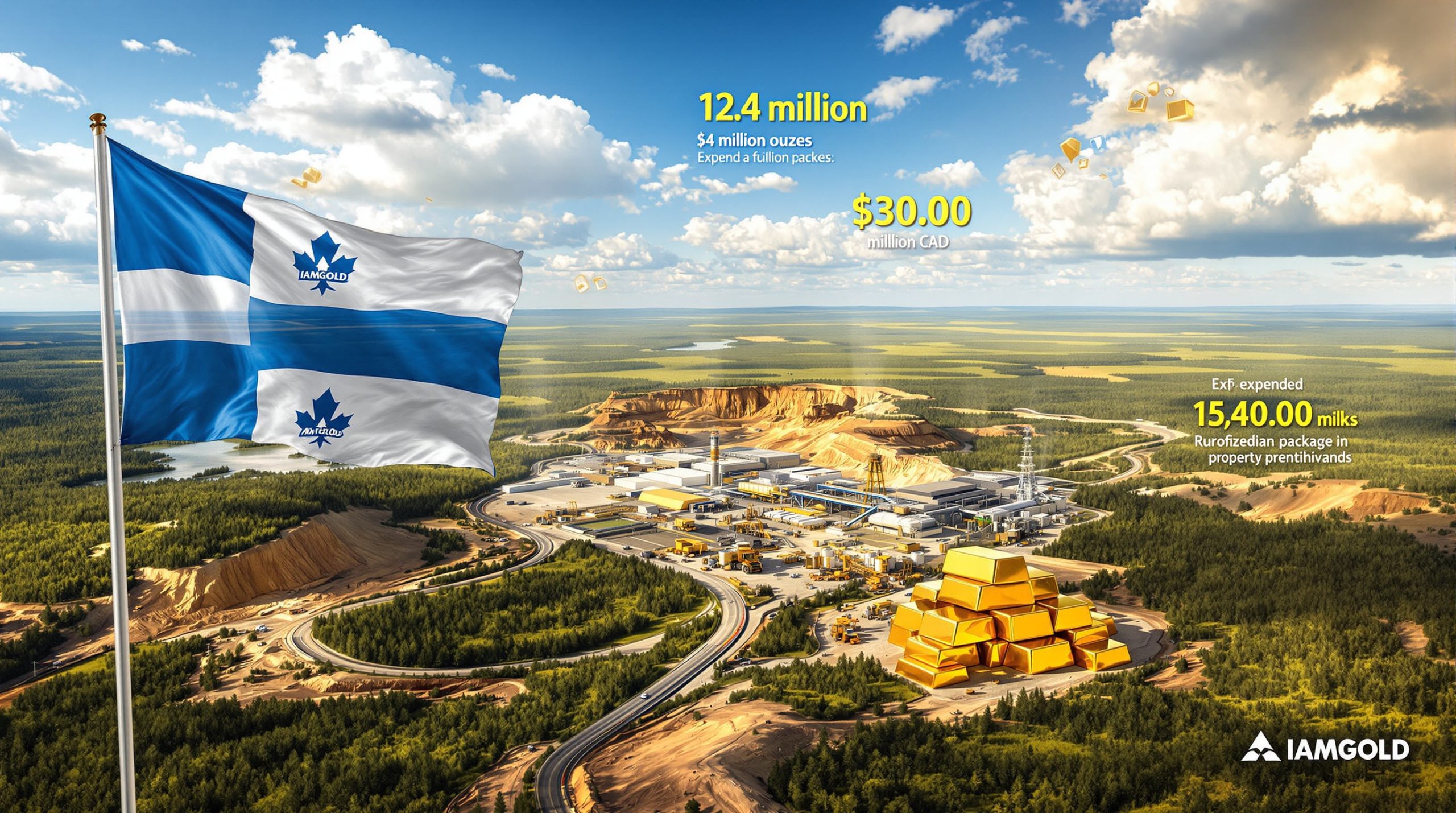The global economy increasingly depends on a reliable supply of essential materials, making the US and Australia critical minerals partnership a pivotal development for resource security. Furthermore, the critical minerals transition represents one of the most significant economic shifts of our time, as nations recognise that control over these materials directly translates to technological and strategic advantages.
Critical minerals serve as the foundation of contemporary technological advancement, powering everything from renewable energy systems to advanced defense equipment. These essential materials include rare earth elements, lithium, cobalt, nickel, and other specialised metals that enable the functionality of electric vehicles, wind turbines, solar panels, and sophisticated military hardware.
The global demand for these materials has intensified dramatically as nations accelerate their transition toward clean energy and digitalisation. Battery manufacturing alone is projected to require a 400% increase in lithium supply by 2030, while rare earth elements remain indispensable for permanent magnets used in wind turbines and electric motors.
Industries Relying on Critical Minerals
Industries relying heavily on critical minerals include:
- Clean energy infrastructure: Solar panels, wind turbines, energy storage systems
- Electric vehicle manufacturing: Battery cells, electric motors, charging systems
- Defence and aerospace: Advanced radar systems, missile guidance, satellite technology
- Consumer electronics: Smartphones, computers, telecommunications equipment
- Industrial automation: Robotics, precision manufacturing, advanced sensors
China currently dominates critical minerals processing, controlling approximately 70-80% of global rare earth refining capacity. This concentration creates significant supply vulnerabilities for Western economies, particularly given recent export restrictions implemented by Beijing on critical materials including gallium and germanium.
Addressing China's Strategic Mineral Dominance
China's overwhelming control of critical minerals supply chains extends beyond simple market share statistics. The nation processes over 90% of the world's rare earth elements and maintains substantial influence over lithium refining, despite Australia and Chile leading primary production.
Recent policy shifts from Beijing have heightened global concerns about supply security. In December 2023, China implemented new export controls on graphite, a crucial battery component, requiring special licences for overseas shipments. These measures followed earlier restrictions on gallium and germanium exports, materials essential for semiconductor manufacturing.
The concentrated supply chain creates several vulnerabilities:
- Price volatility: Single-source dependencies enable rapid price manipulation
- Supply disruptions: Geopolitical tensions can immediately impact availability
- Technology transfer pressure: Access often requires sharing proprietary knowledge
- Strategic leverage: Critical materials become tools of economic statecraft
China's approach combines state-directed investment with environmental externalisation, allowing below-market pricing that undercuts international competitors. However, innovative approaches like the recent battery recycling breakthrough demonstrate potential pathways to reduce primary resource dependencies whilst maintaining environmental standards and labour protections.
Framework Architecture of the US-Australia Partnership
The US and Australia critical minerals partnership establishes a non-binding but formalised collaborative structure designed to enhance supply chain resilience. Unlike traditional trade agreements, this framework emphasises flexibility and rapid adaptation to changing market conditions.
Key structural elements include:
- Joint oversight mechanisms: Shared responsibility for strategic decision-making
- Flexible withdrawal terms: Either party may exit with 30 days written notice
- Performance-based commitments: Success measured through concrete project delivery
- Regular review cycles: Quarterly assessments of progress and priority adjustments
The agreement deliberately avoids rigid contractual obligations that might slow response times to market developments. Instead, it creates a platform for ongoing alignment between two nations with complementary strengths in geology, technology, and financial resources.
This structure reflects lessons learned from previous international partnerships that became bogged down in bureaucratic processes. The emphasis on agility allows both countries to respond quickly to emerging threats or opportunities in critical minerals markets.
Leadership Structure and Institutional Framework
The US-Australia Critical Minerals Supply Security Response Group serves as the partnership's primary governing body, co-led by the US Secretary of Energy and the Australian Minister for Resources. This ministerial-level leadership ensures direct access to policy-making authority in both governments.
The Response Group's core responsibilities encompass:
- Priority mineral identification: Determining which materials require immediate attention
- Vulnerability monitoring: Tracking supply chain risks and market disruptions
- Strategic response coordination: Developing joint approaches to emerging challenges
- Investment facilitation: Streamlining approval processes for critical projects
- Technology sharing: Promoting collaborative research and development initiatives
Supporting this leadership structure are working groups focused on specific mineral categories and technical specialisations. These include teams dedicated to rare earth processing, battery materials, defence-critical elements, and recycling technologies.
The institutional framework incorporates private sector engagement through industry advisory panels that provide real-time market intelligence and technical expertise. This hybrid approach combines government strategic planning with commercial operational knowledge.
Recent developments, including the executive order on minerals, have further emphasised the strategic importance of securing reliable supply chains through allied partnerships rather than dependency on potentially hostile suppliers.
Investment Mobilisation and Financial Mechanisms
The partnership commits to mobilising at least US$1 billion (A$1.54 billion) for approved critical minerals projects within six months of the agreement's implementation. This aggressive timeline reflects the urgency both nations place on reducing supply chain vulnerabilities.
Financial mechanisms deployed include:
Government-backed loans: Direct lending for high-priority projects with favourable terms
Loan guarantees: Risk mitigation for private investors in critical infrastructure
Regulatory streamlining: Accelerated permitting and approval processes
Tax incentives: Preferential treatment for strategic mineral investments
Research grants: Support for innovative extraction and processing technologies
The funding strategy emphasises risk-sharing between public and private sectors, with government backing designed to de-risk investments that might otherwise struggle to attract commercial capital. Priority projects include processing facilities, recycling operations, and advanced extraction technologies.
Investment allocation follows a tiered approach:
| Project Phase | Funding Percentage | Primary Mechanism |
|---|---|---|
| Exploration | 15% | Research grants |
| Development | 35% | Loan guarantees |
| Construction | 40% | Direct loans |
| Operations | 10% | Tax incentives |
Supporting Regional Innovation
The partnership recognises that Australia lithium innovations play a crucial role in establishing competitive alternatives to existing supply chains. Consequently, these initiatives receive priority consideration for funding and regulatory support.
Innovation Priorities and Circular Economy Integration
Recycling technologies represent a critical component of the US and Australia critical minerals partnership, addressing both supply security and environmental sustainability. Current recycling rates for many critical minerals remain below 10%, presenting significant opportunities for improvement.
Joint research initiatives focus on:
- Battery recycling: Recovering lithium, cobalt, and nickel from end-of-life systems
- Rare earth reclamation: Extracting valuable elements from electronic waste
- Magnet reprocessing: Maintaining performance characteristics in recycled materials
- Scrap optimisation: Improving collection and sorting of critical material waste
The partnership aims to increase recycling efficiency to 40% for battery materials by 2030, reducing primary extraction requirements and improving supply resilience. Advanced separation technologies and automated sorting systems receive particular attention in joint research programmes.
Circular economy principles guide investment decisions, with preference given to projects that incorporate end-of-life material recovery. This approach creates closed-loop systems that reduce both environmental impact and supply chain dependencies.
Innovation priorities also encompass alternative material development, seeking substitutes for the most supply-constrained critical minerals. Research into synthetic alternatives and material efficiency improvements could reduce overall demand growth whilst maintaining performance standards.
Market Transparency and Fair Trading Practices
The partnership promotes standardised, transparent pricing systems for critical minerals to counter market distortions created by non-commercial actors. Current pricing mechanisms often lack transparency, enabling manipulation by state-controlled enterprises operating with non-market objectives.
Key initiatives include:
Benchmark development: Creating industry-standard pricing references for major critical minerals
Market surveillance: Monitoring trading patterns for anti-competitive behaviours
Information sharing: Publishing supply and demand data to improve market efficiency
Contract standardisation: Developing template agreements that promote fair trading terms
The partnership specifically targets unfair trade practices including below-cost selling, export restrictions used for competitive advantage, and technology transfer requirements tied to market access. Counter-measures include coordinated trade actions and alternative supply development.
Market analysis indicates that transparent pricing could reduce critical mineral price volatility by up to 25%, improving planning certainty for downstream manufacturers and reducing speculative trading that distorts supply allocation.
Defence procurement diversification receives special attention, with both nations committing to source critical materials from partnership-approved suppliers where possible. This approach creates stable demand signals that support investment in alternative supply chains.
Global Competitive Positioning and Strategic Advantages
The US and Australia critical minerals partnership offers distinct advantages compared to other international approaches to supply security. European Union initiatives focus primarily on diversification through multiple supplier relationships, whilst this bilateral partnership emphasises deep integration between complementary economies.
Australia's geological advantages include:
- World's largest lithium reserves (approximately 5.7 million tonnes)
- Significant rare earth deposits with lower radioactive content than Chinese sources
- Established mining infrastructure and regulatory frameworks
- Political stability and aligned democratic values
United States contributions encompass:
- Advanced processing technologies and research capabilities
- Large domestic market providing demand stability
- Financial resources and risk management expertise
- Defence and aerospace industry integration
This combination creates competitive advantages over purely nationalist approaches adopted by some countries. Integrated supply chains typically achieve 15-20% lower costs than fragmented alternatives whilst providing superior security through redundancy and geographical diversification.
Comparison with other international initiatives reveals strategic positioning:
| Initiative | Primary Focus | Geographic Scope | Investment Commitment |
|---|---|---|---|
| US-Australia Partnership | Bilateral integration | Pacific alliance | US$1 billion committed |
| EU Critical Materials Act | Supplier diversification | Global partnerships | €2 billion estimated |
| Japan-India Cooperation | Technology sharing | Asian markets | ¥50 billion proposed |
Furthermore, the broader mining sustainability transformation demonstrates how environmental considerations can be successfully integrated into strategic resource partnerships without compromising economic objectives.
Security and Economic Transformation Outcomes
The partnership's projected outcomes extend beyond immediate supply security to encompass broader economic and strategic transformations. National security benefits include reduced dependence on potentially hostile suppliers and improved resilience against economic coercion.
Manufacturing competitiveness improvements are expected through:
- Cost stability: Reduced price volatility in critical input materials
- Supply reliability: Multiple supply sources preventing production disruptions
- Technology advancement: Joint research creating competitive advantages
- Market positioning: Early access to emerging technologies and materials
For clean energy transition goals, the partnership supports decarbonisation objectives by ensuring adequate supplies of materials essential for renewable energy infrastructure. Battery manufacturing, in particular, requires supply security to achieve the scale necessary for cost competitiveness with fossil fuel alternatives.
Defence applications benefit from supply chains that cannot be compromised by adversarial actions. Critical components for missile systems, radar equipment, and communications technology require materials that may be unavailable during international tensions if sourced from unfriendly nations.
Economic modelling suggests the partnership could generate US$15-20 billion in additional economic activity across both countries by 2030, primarily through downstream manufacturing and technology development spillovers.
Strategic Mineral Focus and Priority Classifications
The US and Australia critical minerals partnership prioritises specific materials based on supply risk, economic importance, and strategic value. Rare earth elements receive particular attention due to their irreplaceable role in permanent magnets and electronic systems.
Priority mineral classifications include:
Tier 1 Critical Materials:
- Lithium: Essential for battery technologies and energy storage
- Rare earth elements: Neodymium, dysprosium, terbium for permanent magnets
- Cobalt: High-performance battery cathodes and aerospace alloys
Tier 2 Strategic Materials:
- Nickel: Battery cathodes and stainless steel applications
- Graphite: Battery anodes and advanced manufacturing
- Manganese: Steel production and battery chemistry
Tier 3 Emerging Priorities:
- Vanadium: Energy storage and steel strengthening
- Antimony: Flame retardants and semiconductor applications
- Bismuth: Medical applications and advanced alloys
The partnership maintains flexibility to adjust priority classifications as market conditions and technological requirements evolve. Quarterly reviews assess supply risks and demand projections to ensure resource allocation remains optimised for emerging challenges.
Partnership Expansion and Future Collaboration
While initially bilateral, the framework includes provisions for expansion to include additional allied nations. Canada, Japan, and the United Kingdom represent potential partners with complementary capabilities and aligned strategic interests.
Expansion criteria emphasise:
- Democratic governance: Shared political values and transparent institutions
- Economic compatibility: Market-based economic systems and trade openness
- Technical contribution: Unique capabilities in mining, processing, or technology
- Strategic alignment: Commitment to reducing authoritarian supply dependencies
The framework accommodates different levels of participation, from full integration to specialised cooperation agreements. This flexibility allows nations to contribute according to their specific strengths without requiring identical commitments across all partnership activities.
Future collaboration opportunities include joint research facilities, shared processing infrastructure, and coordinated stockpiling programmes. Technology sharing agreements could accelerate development of next-generation extraction and processing methods whilst maintaining competitive advantages over non-allied suppliers.
Financial Implementation and Project Deployment
The US$1 billion funding commitment will be deployed through staged implementation designed to maximise impact whilst maintaining fiscal responsibility. Project selection criteria emphasise strategic value, commercial viability, and implementation timeline.
Funding deployment stages:
Phase 1 (0-6 months): US$300 million for immediate priority projects
Phase 2 (6-18 months): US$400 million for medium-term infrastructure development
Phase 3 (18-36 months): US$300 million for advanced technology and expansion projects
Priority allocation focuses on projects that can begin production within 24-36 months, addressing the most immediate supply vulnerabilities. Processing facilities receive preference over extraction projects due to their typically shorter development timelines and higher value addition.
Example funding allocations:
- Rare earth processing facility (Australia): US$150 million, 18-month timeline
- Battery recycling plant (United States): US$100 million, 12-month timeline
- Lithium processing upgrade (Australia): US$80 million, 15-month timeline
- Research consortium (Both countries): US$50 million, 36-month timeline
Risk Management and Withdrawal Mechanisms
The partnership's 30-day withdrawal notice provision reflects the non-binding nature of the agreement whilst ensuring orderly transitions if circumstances change. This flexibility distinguishes the partnership from traditional trade agreements that may become liabilities during shifting geopolitical conditions.
Risk mitigation strategies include:
- Project diversification: Multiple initiatives to prevent single-point failures
- Performance monitoring: Regular assessment of partnership effectiveness
- Stakeholder engagement: Industry input to maintain commercial relevance
- Contingency planning: Alternative approaches if primary strategies encounter obstacles
Withdrawal procedures require coordination to protect ongoing projects and ensure continuity for private sector participants. Asset protection mechanisms prevent sudden termination from creating stranded investments or disrupting established supply chains.
The partnership structure acknowledges that geopolitical circumstances may necessitate adjustments whilst maintaining core commitments to supply security and technological advancement. This pragmatic approach increases the likelihood of sustained cooperation across different political administrations.
Transforming Global Critical Minerals Landscape
The US and Australia critical minerals partnership represents a fundamental shift toward allied cooperation in strategic resource management. By combining Australia's world-class geological resources with American technological and financial capabilities, the partnership creates a compelling alternative to China-dominated supply chains.
Long-term implications include:
- Market restructuring: Competitive alternatives to monopolistic suppliers
- Technology advancement: Collaborative innovation accelerating industry development
- Economic resilience: Diversified supply chains reducing vulnerability to disruption
- Environmental progress: Higher standards driving sustainable extraction and processing
The partnership's success could catalyse similar arrangements among democratic allies, creating an interconnected network of secure supply relationships that collectively challenge authoritarian resource leverage. Strategic autonomy in critical materials represents a cornerstone of economic security in an increasingly multipolar world.
As global demand for critical minerals continues expanding with clean energy transitions and technological advancement, partnerships like this bilateral initiative provide pathways to sustainable, secure, and economically viable supply solutions. The strengthening of ties through initiatives like the US-Australia Framework demonstrates how aligned democracies can collaborate effectively to address shared strategic challenges.
Furthermore, industry analysis from organisations like the Minerals Council of Australia highlights the significant economic potential of this partnership, with projections indicating substantial job creation and export revenue growth across both nations.
In conclusion, this bilateral arrangement demonstrates how aligned democracies can collaborate effectively to address shared strategic challenges whilst maintaining competitive market principles and environmental responsibility.
This analysis is based on publicly available information and should not be considered investment advice. Critical minerals markets involve significant risks including price volatility, regulatory changes, and geopolitical developments that may impact investment outcomes.
Looking to Capitalise on Critical Minerals Investment Opportunities?
Discovery Alert's proprietary Discovery IQ model delivers real-time notifications on significant ASX mineral discoveries, instantly identifying actionable opportunities in lithium, rare earths, and other critical materials before the broader market responds. With the US-Australia partnership driving unprecedented investment into strategic minerals, subscribers gain crucial market intelligence to position themselves ahead of major announcements that could mirror the exceptional returns seen in historic discoveries from companies like De Grey Mining and WA1 Resources.




